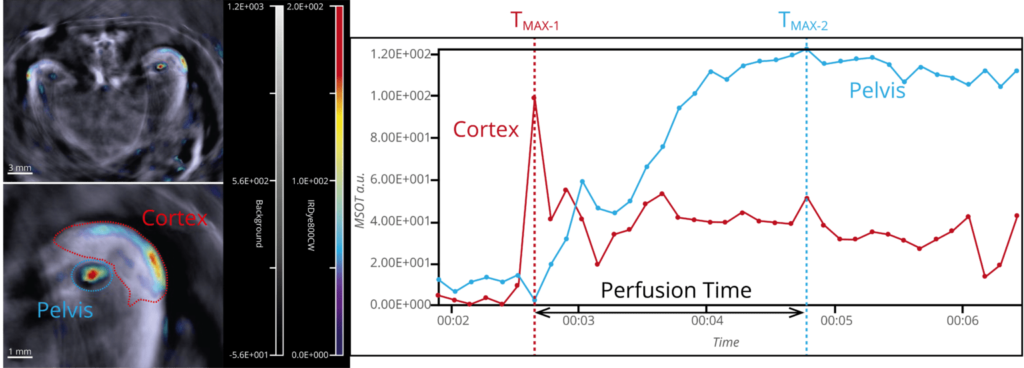Diabetic nephropathy is characterized by the chronic loss of kidney function in individuals afflicted with diabetes mellitus. Worldwide, it is one of the leading causes of chronic kidney disease and end-stage renal disease. The molecular mechanisms of this disease are often studied in preclinical models. The extent of disease is characterized by measurement of protein in the urine, serum creatinine, or histology. However, these approaches can be invasive or time consuming, or yield small sample volumes. MSOT is a facile, non-invasive approach that has been used longitudinally to assess the extent of renal disease in mice, and can be used to accelerate research on the mechanisms of disease and efficacy of therapy.


Single-wavelength MSOT signal (greyscale) in the mouse kidney overlayed with IRdye800 signal (jet color scale). Renal filtration is quantified by measuring MSOT signals in different parts of the kidney over time.
Renal cortex/pelvis hemodynamics using IRdye800 imaged with MSOT has been demonstrated in diabetic/obese db/db C57Bl/6 mice, giving researchers a noninvasive tool to study diabetic nephropathy.
Leung et al. Life Sci. 2016